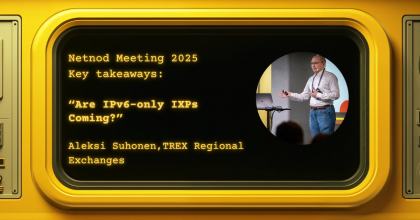
Cloud gaming and the tech that makes it work
The rise of the gaming industry
With upwards of 2 billion gamers and a value estimated to exceed $200 billion by 2023, the video game industry is one of the fastest growing industry sectors.[1][2] It includes everything from traditional console and PC gaming to more recent developments in cloud and mobile gaming. In the last few years, some of the biggest names in the industry have launched cloud gaming platforms. But how does cloud gaming work and what is the technology behind it?
Cloud gaming: low latency is key
Cloud gaming is part of a wider shift from ownership and single device use to accessing content on demand across multiple devices. Instead of buying consoles and games, users pay a subscription fee to play games on demand. But with these games streamed 100% from the cloud, low latency is key.
Every time a player moves that move must be sent to a remote game server which then updates the game state appropriately. Any lag can ruin the game experience. This is especially so for multiplayer games with players connecting from different locations. If we then consider the high bandwidth needed for streaming detailed graphics in HD or 4k, we can see why it is essential for gaming networks to do two things: reduce the distance between game servers and players; and ensure that game traffic takes the fastest possible paths.
How do gaming networks do this? It’s all about the edge!
Gaming on the Edge: the power of interconnection
To get closer to players, cloud gaming networks position their game servers in data centres around the world. From these data centres the game traffic needs to be routed to players as directly as possible. Long traffic routes, or multiple hops between different networks, will increase lag and ruin the game experience.
To deliver this traffic in the fastest way, gaming networks use an interconnection strategy that relies on peering. Peering simply means the exchange of traffic between networks. It is facilitated by Internet Exchanges (IXes) present in data centres. This enables enterprise networks, such as gaming companies, to exchange traffic directly with Internet Service Providers (ISPs), Content Delivery Networks (CDNs), telecom operators, Cloud Providers and other enterprise networks. Exchanging traffic at an IX means that traffic is always routed in the fastest way to end customers. In the case of gaming networks, this means their traffic takes the shortest round trip possible between the gamer and the game server.
A power up for gaming in the Nordics
Netnod operates six Internet Exchanges (IXes) throughout the Nordics: Stockholm, Copenhagen, Oslo (powered by NIX), Sundsvall/Gavle, Gothenburg and Lulea. By peering at these IXes, gaming networks get as close as possible to end customers. The IXes ensure low latency, high bandwidth capacity and the fastest routes for traffic.
Netnod’s state-of-the-art interconnection platform is home to some of the biggest gaming platforms and networks. With more interconnection possibilities than ever, IXes such as Netnod are helping to power cloud gaming to a future where the sky is the limit.
Netnod IX: fast facts
- 200 networks exchanging >2 Tbps traffic
- peering opportunities with the largest ISPs, CDNs, telecom operators and Cloud Providers in the region
- minimised latency and transit costs
- improved speed, stability, redundancy and routing control
- industry-leading security and 100% uptime
You can find out more about Netnod’s IX services here.
[1] https://www.wired.com/story/cloud-gaming-infrastructure-arms-race/




